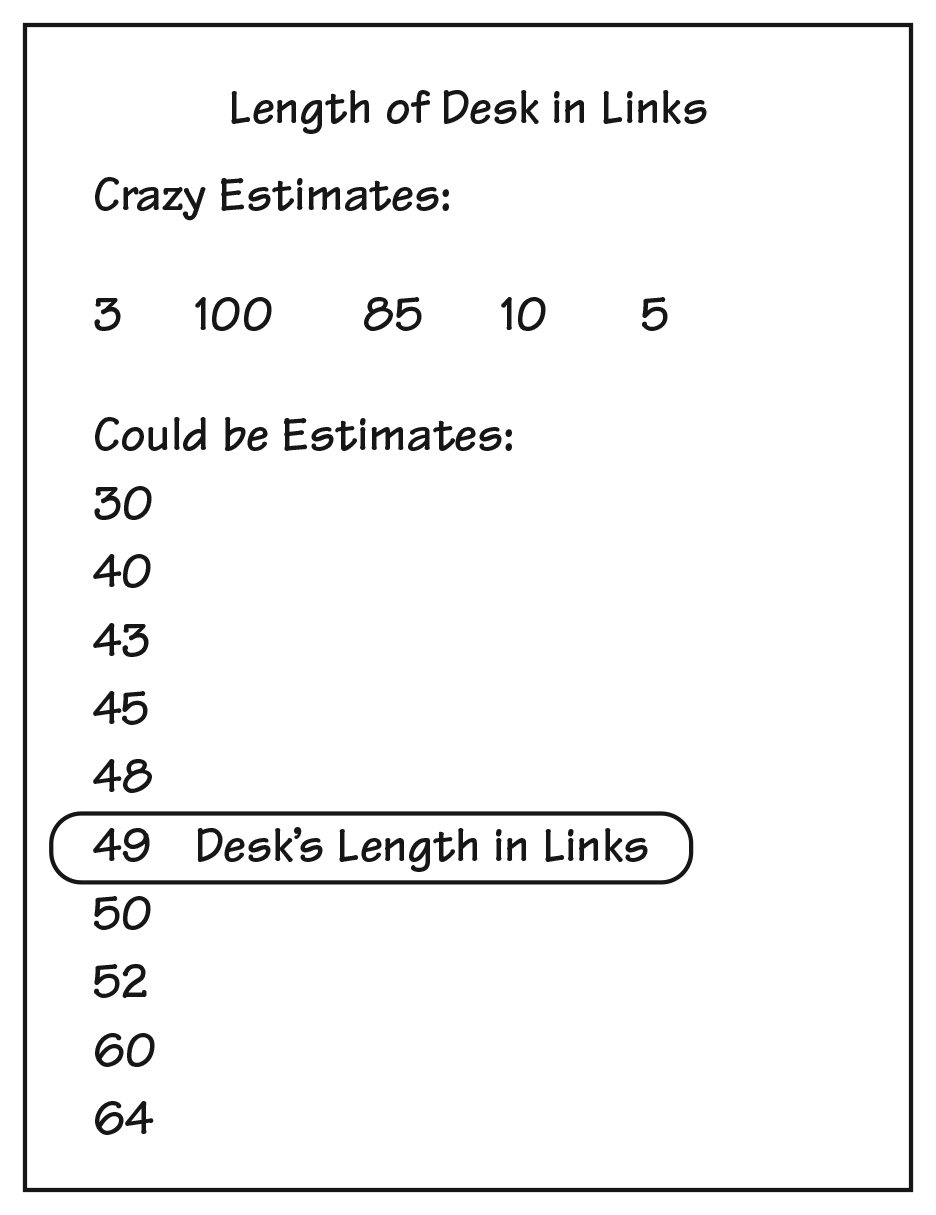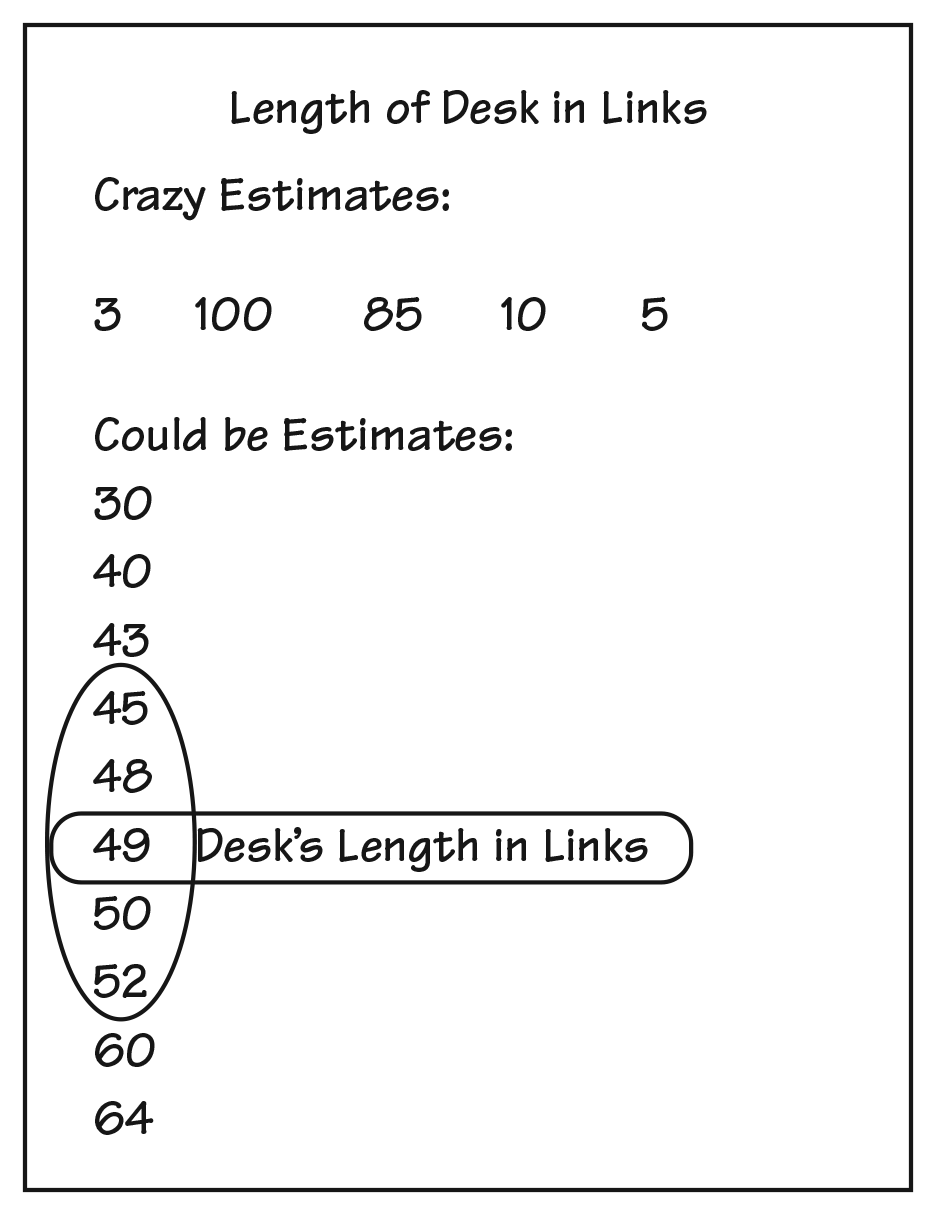Could Be or Crazy
Est. Class Sessions: 1Developing the Lesson
Part 1: Estimating and Measuring with Links
Estimate and Measure with a 100-Link Chain.
Draw attention to the 100-link chain you prepared prior
to the lesson. See Materials Preparation. Tell the students
you think it is 100 links long, but you need them
to check it to make sure.
Ask:
If students do not suggest it, ask them to skip count by tens to verify the length of the chain. Remind students of Math Practices Expectation 6, Use labels. Stress that it is important to include the correct unit when reporting their measurements so that is clear what their numbers mean.
Review with students that a reasonable estimate is a "good guess." Tell them that sometimes they will have to measure something or figure it out exactly and at other times they will need to be able to make a "good guess." They need to practice both things so that they become good estimators as well as good measurers. See Content Note.
Have them look at the 100-link chain and ask:
Give the students a few minutes to think about the
question. Encourage them to discuss their thinking
with their classmates. Write the students' estimates on
the board, no matter how rough. A wide range of reasonable
estimates for a first-grader's height might be
anything from 25 links (about 32 inches) to
50 links
(64 inches). It is important to engage students in a discussion
about their reasoning.
Ask:
Ask a student of average height to come forward and have another student measure him or her in links. Emphasize counting the links by tens and then counting on the additional links. Ask another student to verify the measurement.
Have the students compare the actual measurement with the estimates on the board.
Ask:
Estimate and Measure with 10-Link Chains. Distribute a 10-link chain to each student. See Materials Preparation. Ask students to look at the teacher's desk. Make clear which part of the desk they are to consider, such as the length of the top of the desk.
Tell students to think about the 10-link chains and the 100-link chain while determining an estimate for the length and ask:
Write the "crazy" estimates on the board and see if there is agreement in the class that these estimates are in fact "crazy." See Figure 2.
Then ask:
Have each pair write their estimate on a piece of paper. When all have finished, ask them to tell the class their estimate. Write the estimates on the board from lowest to highest as in Figure 2.
Ask:
Ask a student to measure the desk with links. Ask:
Write the measurement at the appropriate interval among the list of estimates and mark it clearly as the actual measurement.
Evaluate the Reasonableness of an Estimate. Remind students that an estimate is not the same as an actual measurement and that it is not expected that it will be the same as the measurement. However, we do want to have some way to decide whether we think an estimate is a good guess (it could be) or whether it is not close enough.
Ask:
Analyze with the class whether the estimates cluster around the actual measurement or if they are more spread out. If there is an identifiable cluster, draw a circle around the cluster and suggest that maybe the estimates inside the circle could be considered close enough and those outside not close enough. If there is no identifiable cluster around the measurement, have the students discuss where to draw the lines between the estimates they think are close enough and those not close enough. Allow for a wide range of estimates to be considered close enough. See Figure 3.















